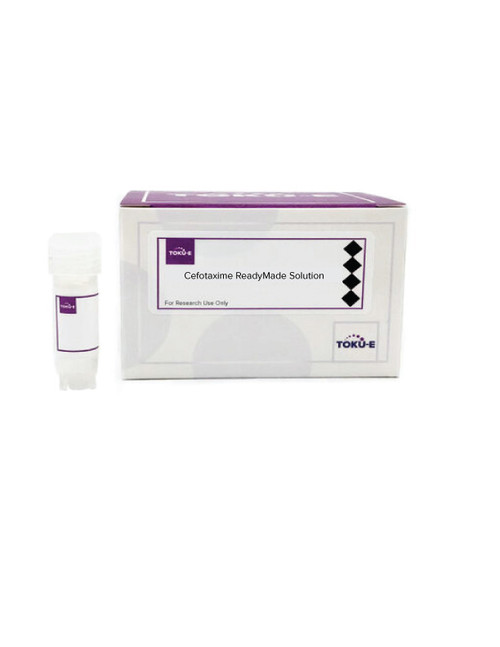Puromycin Dihydrochloride ReadyMade™ solution (10 mg/mL in 20 mM HEPES) is a sterile aminonucleoside antibiotic solution derived from Streptomyces alboniger. Puromycin DiHCl is routinely used as a selective agent in transfection and transformation protocols.
For more Puromycin products, click here.
| Mechanism of Action | During translation, Puromycin enters the ribosomal “A” site and disrupts peptide transfer. As a result, the ribosome stops and the peptide chain is terminated leading to a nonfunctional protein. |
| Spectrum | Puromycin DiHCl is active against both prokaryotic and eurkaryotic cells. |
| Eukaryotic Cell Culture Applications | Puromycin DiHCl is commonly used as a selective agent to isolate mammalian cells after transfection with the pac gene. The pac gene encodes puromycin N-acetyltransferase; a protein that inactivates Puromycin by acetylation.
Conti et al. used Puromycin DiHCl solution (TOKU-E) to select for eGFP expressing A549 cells. Polymeric nanocarriers and their oral inhalation formulations for the regional delivery of nucleic acids to the lungs. Sandoval-Jaime et al. used Puromycin DiHCl (TOKU-E) to select for stably transfected cells. Recovery of murine norovirus and feline calicivirus from plasmids encoding EMCV IRES in stable cell lines expressing T7 polymerase. Mutonga et al. used Puromycin (TOKU-E) to select for resistant cells transformed with a vector containing SUV39H2 (a histone methyltransferase) and a puromycin resistance gene. Targeting suppressor of variegation 3-9 homologue 2 (SUV39H2) in acute lymphoblastic leukemia (ALL)." Foltyn et al. used Puromycin, G418 Disulfate and Hygromycin B (TOKU-E): The physiological mTOR complex 1 inhibitor DDIT4 mediates therapy resistance in glioblastoma. For more information on relevant cell lines, media, and working concentrations, please visit the TOKU-E Cell Culture Database. |
| Molecular Formula | C22H29N7O5•2HCl |
| Documents | Puromycin Protocol.pdf|Plasmid_DNA_Transfection_Protocol.pdf|Selection_of_Stable_Transfected_Cell_Lines_Protocol.pdf |
| References |
Azzam ME (1973) Mechanism of Puromycin action: Fate of ribosomes after release of nascent protein chains from polysomes. PNAS 70(12):3866-3869 Vara J (1985) Cloning and expression of a Puromycin N-acetyl transferase gene from Streptomyces alboniger in Streptomyces lividans and Escherichia coli. Gene 33(2):195-206 |
| Protocols |
Puromycin DiHCl Kill Curve Protocol Background:
Plasmid DNA Transfection Protocol
Once the appropriate antibiotic concentration to use for selection of the stable transfected cells has been determined by performing a kill curve, the next step is to generate a stable cell line by transfection of the parental cell line with a plasmid containing the gene of interest and an antibiotic resistance gene.
Plasmid DNA Transfection Protocol:
QC Seed 24-wells with insert and determine the transfection efficiency by immunostaining:
Selection of Stable Transfected Cell LinesBackground:Once the cells have been successfully transfected, the next step is to seed and select the transfected cell line in a single 96-well plate to select pure colonies by limited dilution as outlined below: Protocol:
QC Seed 24-wells with insert for an immunostaining to determine percentage of cells expressing the gene of interest to be able to identify a 100% pure clone. You can also use Western blotting, flow cytometry or another technique depending on the cell line used. Seed 24-wells with insert and determine the expression level of the gene of interest by immunostaining:
|
| MIC | Streptococcus pneumonia (ATCC 6303 + quinolone-susceptible)| 1 - ?| 437| Streptococcus pneumonia (ATCC 7257 + quinolone-resistant)| 1 - ?| 437| |








